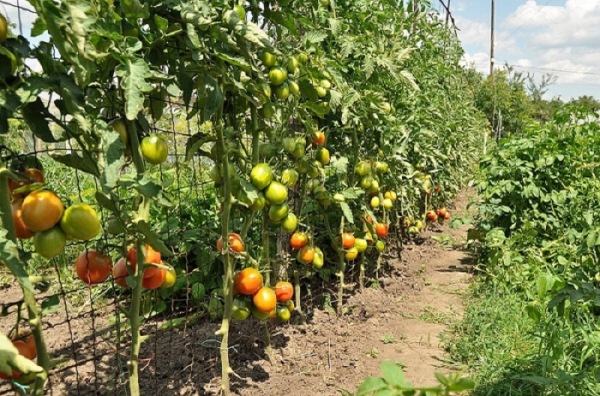This is the name of a specially made support of vertical type, intended for plants in the garden or in the garden. Structurally, it may consist of poles dug into the beds of wood or metal, between which the plastic or metal grid stretches. It is allowed to replace the net with full wooden planks. Today, such props can be purchased in stores or to make yourself using handy material. In this review, we will talk about making tapestries for tomatoes with our own hands and their design features.
Table of contents
Purpose and advantage of the trellis for tomatoes
Indeed, the tomatoes attached to the supports receive more oxygen, are illuminated by sunlight, which is necessary for the formation of the ovary and ripening of the crop. At the same time, the contact of leaves with the moistened soil is completely excluded, which helps prevent many diseases. During the formation, the stalk is tied up, then it is the turn of branches with vegetables. Thus, the load on the main trunk of the bush is reduced.
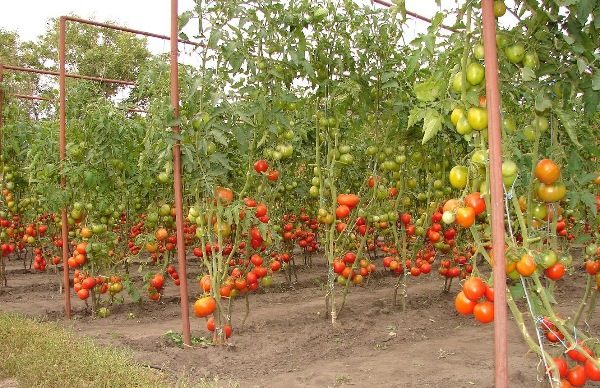
Tomato plants on a trellis grown in an open garden feel better, increase yields, and can withstand adverse climatic conditions. Their fruiting season becomes longer.
In addition, the use of trellis gives its advantages in the care of tomato cultures:
- you can freely move between rows;
- plants well ventilated, they are easier to pinch;
- relieved harvest, fruits are not injured.
Designs
The trellis is a support for tomato plants, supporting stems and heavy tomatoes. It can be made of ropes, wire, or mesh with large cells, strung along columns.
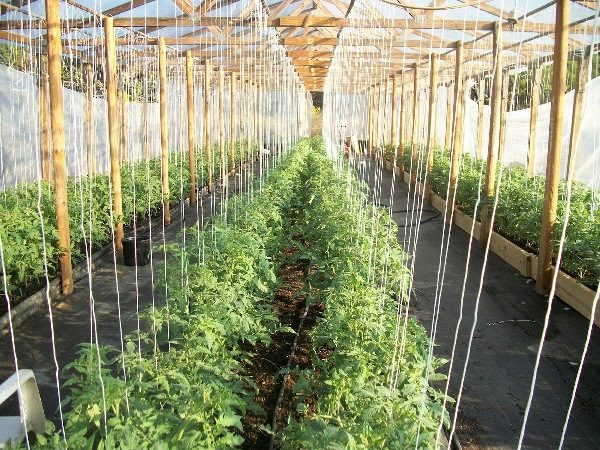
Hardware stores present to gardeners ready-made trellis constructions designed for installation in polycarbonate greenhouses. There are options for unprotected soil with the possibility of sheltering plants in cold weather.
Most gardeners prefer to make tapestries on their own, while showing great imagination.
How to make a trellis do it yourself
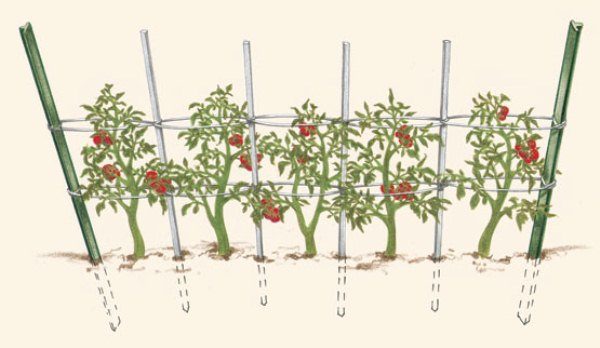
Taking into account the simplicity of the design and the fact that the available materials for its manufacture can always be found in any household, a home-made trellis is not devoid of meaning. At the same time, it is possible to save money space in the beds, install supports not only for tomatoes, but also for other plants.
Preparation of materials
The simplest version of a trellis, suitable for the cultivation of not very high and strongly branching tomato varieties - stretched in several tiers between the ropes or the wire. The construction should rise above the bed up to one and a half meters in order to be able to tie up the plants as they grow. To install this support will need:
- supports from metal or wood;
- wire either twine.
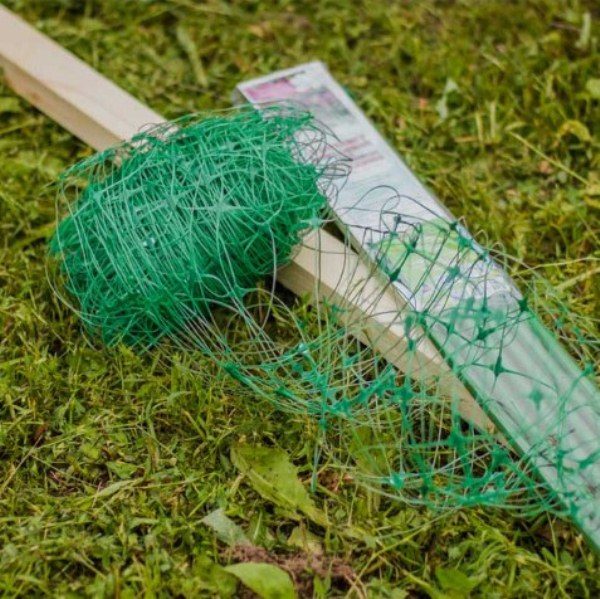
In addition, for more serious designs may be required:
- rags;
- polyethylene;
- polymer mesh;
- mounting material.
Instructions for making
If you decide to grow tall tomato varieties, the height of the trellis must be up to two meters in order to properly form the bushes. In such a case, a thick wire is pulled along the posts, from which ropes intended for garters are pulled down to each plant. They can be made of soft cloth or plastic film so as not to damage the branches of plants.
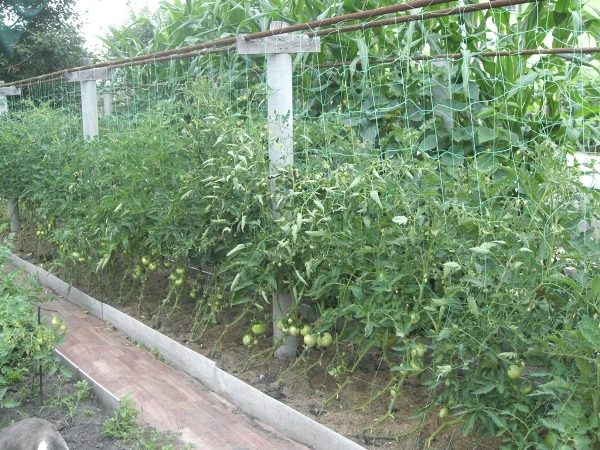
An excellent solution - the use of polymer mesh with large cells. To install such a tapestry you need:
- to establish support posts;
- secure a network between themso that it does not touch the soil.
It should be added that such a grid can be successfully used as a bed for plants in a polycarbonate greenhouse. It should only fasten it to the top of the greenhouse and hang freely. Now you can tie up branches and brushes with fruits at any height.
Another practical option is a construction having the shape of the letter “X”. Wooden poles are stuck in the beds at a certain angle, intersect, are tied up with a pair of twine or wire at the points of contact. On top of this hut is laid and fixed a long crossbar. The ropes are hung on it to hold the plants.
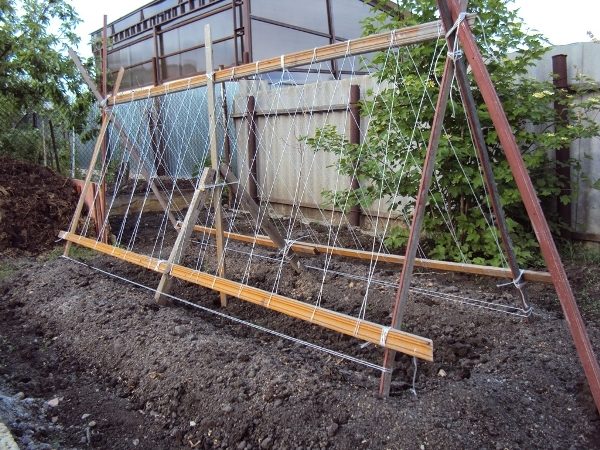
Vertical support columns dig in two to three meters to a depth of fifty to sixty centimeters. If a significant load is expected, the ground around the pillars should be reinforced with broken bricks, crushed stone or concrete. Wooden poles are treated with antiseptic composition, painted or covered with stain. This measure allows you to save them from dampness and exposure to insects. Supports made of metallic material must be primed.
Wooden elements are fastened with nails or screws. Metal parts are connected by wire or welded. From above you can stretch the twine to protect the plants with a covering material in bad weather.
There are craftsmen who make volumetric designs from a thin metal rod. It is very convenient for small areas. Such a tapestry will perfectly help save space, last a long time.
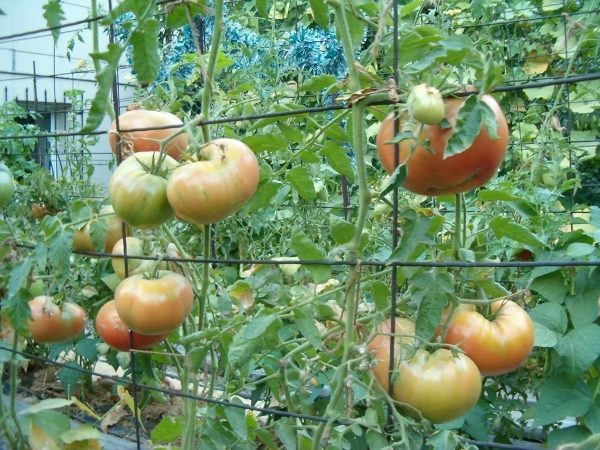
Tomato garter methods
For tying up tomato bushes it is necessary to use a thick and soft material. It is best to prepare it from rags. Hard twine and wire is not recommended.
Tying can be done in several ways:
- fix branches on transverse supports as they grow;
- from the top rope pull down the garters, to "pick up" the plants.
As you can see, everything is quite simple. Showing a little wit, from scrap materials you can always organize support structures, so that your plants are well formed and perfectly fruited.
